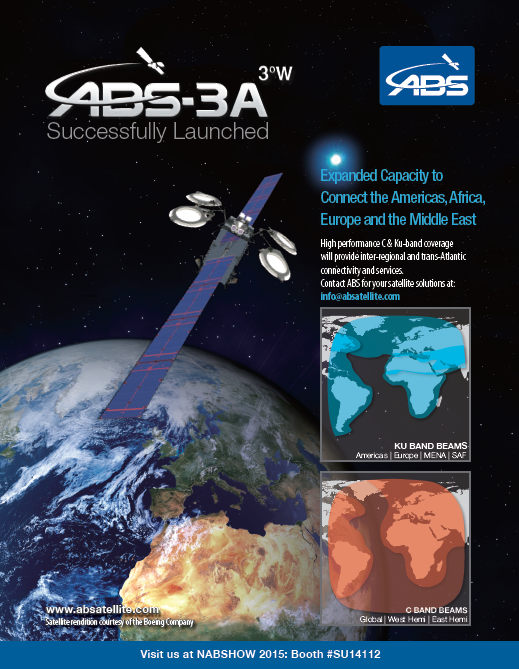Video content providers, from traditional broadcasters to Internet streaming platforms, face expanding consumption models and the challenge of responding to direct and immediate feedback from viewers.

Metadata is the key to enabling this consumer-driven evolution and an important role for the content provider in the overall distribution chain.
In this article, the discussion will cover...
1. What can be accomplished using metadata formatted to the SCTE-35 standard, or equivalent for non-MPEG streams
2. How specific metadata messages are used to describe content
3. Multiple methods for inserting metadata into the video stream
What Can Be Done With Metadata In The Video Stream?
To understand what metadata is required within a distribution stream, you must think about how the video content can be enhanced for the viewer. The context and mode by which the video is consumed plays a crucial role in determining what metadata is important. Viewing of live versus recorded content dictate different metadata approaches
Metadata in a Live Stream
For production of live linear content, metadata is created and inserted as the event unfolds requiring systems and processes that can react in real-time.
An important aspect of live streams is the concept of “social viewing.” No matter the changes in consumer behavior, social viewing of live sporting and news events will continue to be an important activity. The specific content to be delivered can, and should, vary based on where people are gathered to watch those events—their context.
Live events, especially sports events, impose video distribution restrictions, or blackouts, based on the attendance, or lack of, at the actual event. Each league defines unique restrictions and enforcement is complicated when viewing occurs on a mobile device that may or not be with in a geographic blackout zone. Metadata within the stream is used to ensure the rules are followed for the given viewing context. While this context driven metadata approach places an increasing burden on the content distribution networks it also opens up multiple ways to monetize the content.
Metadata in Prerecorded Content
For non-live content, video on demand is the norm. People catch up on their favorite shows after being on vacation, or they binge watch an entire season during a weekend.
The sales or promotions that accompanied the initial linearly distributed video stream may be expired by the time the video content is viewed on demand or the offers may have changed. To fully support the new consumption paradigm and maximize revenue opportunities, metadata can be included in this pre-recorded video to build an on-the-fly playlist of offers and advertising that is relevant to the viewer at the time they view on-demand content.
With viewer specific information and the correct metadata, video content providers and their advertisers can deliver relevant content targeted to the viewer that would not have received in any other way.
What SCTE-35 Metadata Is Required
Understanding the required metadata is currently the greatest challenge for the industry as it seeks to keep up with the changed and evolving video distribution models.
Each segment of an MPEG video program can be marked up with SCTE-35 metadata to describe the entire program. The programmer must decide what constitutes a “segment.” Traditionally, a video program is categorized into one of three segment types:
• The main program—video associated with the show being distributed. This includes some advertisements inserted by the programmer that should not be replaced by cable head-ends or other re-distributors.
• National Spots—advertising segments where re-distributors, such as national cable super-head-ends and Direct-To-Home satellite service providers, can insert advertisement or promotional content for their entire subscriber base.
• Optional Local Spots—advertising segments where local re-distributors, such as local cable head-ends or DTH regional channels, can insert advertisement or promotional content they want to deliver only to local subscribers.
However, these three categories are not enough to completely solve the challenges of modern video distribution.
When a video program is made available for web streaming subscribers or Video-On-Demand consumers, much of the original promotions and advertising may not be applicable or appropriate to the viewer at the time and place they view the program. To facilitate the replacement of content with something more relevant during the live streaming process or during future viewing events, the initial program must have more segment types than just these three. Each of these new segments may be as short as 10 seconds or as long as 60 minutes.
The amount descriptive metadata required is significant and since there are more points where content substitution occurs, the precision of splice point timing must improve over today’s current standards.
Defining Metadata
Two primary pieces of metadata are required within the video stream to successfully define segments so that content replacement is possible. The first identifies “where” in the stream a segment starts and ends; the second identifies “what” content is present in that segment.
The rules defining the conditions under which content replacement can occur are defined outside of the video stream and to be successful, content providers should follow the Event Scheduling and Notification Interface (ESNI) standard to communicate those rules to their distribution partners. The standards for an Event Signaling and Management (ESAM) API provide suggestions for SCTE-35 messages for in-stream signaling.
The “where” to replace content in an MPEG video stream is determined with SCTE-35 splice messages. Splice points must be identified in the stream at the beginning of a content segment and at the end of the same content segment. Because every splice point must begin with an encoder-created IDR frame, the encoder should also insert the SCTE-35 splice message.
The IDR frame is not only a full frame of video content without references to other frames, it instructs receivers to clear their buffer of accumulated reference frames. As no additional B, or P frames can reference any frames before the IDR frame, the encoder must be know where the splice point it so it can properly create the compressed stream that contains the I, B, and P frames.
There are two types of SCTE-35 splice commands that are used to mark a splice point. These two splice commands are contained within a Splice Information Section SCTE-35 message:
• The first, called splice immediate, as the name suggests, instructs receiving equipment to splice in new content at the first available opportunity, which is the closest IDR frame
• The second type of SCTE-35 splice message specifies a specific future time in the stream when a splice point is to occur. The scheduling of a splice point can be conveyed either shortly before a splice point should occur, using a splice insert message, or multiple splice points can be conveyed throughout a program using splice schedule messages
Considerations for Supporting SCTE 35
Historically, systems handled content replacement using cue tones. A specific cue tone defined the start of a segment, they type of segment that followed, and often the duration of a segment.
If a programmer wanted to change the duration of a segment from 60 seconds to 90 seconds, they would have to work with their cable head-end affiliates and agree on a new 3-digit cue tone code that would be used to mark the beginning of a 90 second segment. Traditionally, the type and duration of a segment that followed a cue tone was inflexible and defined using a written agreement.
In contrast, the SCTE-35 standard provides for more flexibility and makes it possible to fully describe a segment within a program. SCTE-35 messages can define not only the start and stop points of a segment, but also the duration, and the content within the segment. In fact, because the duration can be defined at the beginning of a segment, the message defining the end of a segment is optional.
It is good practice to include the duration and the end-segment messages, but only one is required. The cable head-end affiliates that receive the program should be prepared to receive either the duration information, or the end segment splice point, or both.
Another method available to mark splice points for the beginning and end of segments uses the splice schedule SCTE-35 messages. These messages define future splice points for a program. The receiving splicers must remember the schedule splice events and alter those splice events as new splice schedule messages are delivered.
SCTE-35 messages are also used to define “what” content is in each segment. Splice descriptors can be added to a Splice Information Section messages. These descriptors identify the content in each program segment.
The SCTE-35 standard predefines three types of descriptors, but it is possible to define additional proprietary descriptors as well.
• The first predefined descriptor is an Avail descriptor that can be added to the splice insert command and this descriptor is designed to function like a cue tone. It is interpreted by receiving equipment a splice point for substituting local advertising into the program stream.
• The second predefined descriptor is a DTMF descriptor that is designed to instruct a receiver to initiate the specified DTMF tone. The result of this descriptor is the same as the Avail, but it accomplishes this by signaling older splicing equipment that still require the audible DTMF tones.
• The third predefined descriptor is a segmentation descriptor that is used to define the content of a program segment. This descriptor has fields that can be used to turn web distribution on or off or mark whether a segment should or should not be blacked out. It can also be used to add content identification codes that are issued by industry organizations like Ad-ID, EIDR, ISO 15706, and more. These descriptors should be added to splice null, splice insert, or time signal commands before and during a program segment.
According to the specification, if the segmentation descriptor is added to a splice insert command or used to identify the content of a new segment coming up, then the splice command should be delivered at least 4 seconds before the beginning of the segment.
Due to the vast possibilities of potential replacement content and the algorithms necessary to decide which new content segment will be inserted, many content re-distributors ask that these commands be sent eight or even 12 seconds before the beginning of a new segment.
Proprietary descriptors can be used to command devices other than receivers and splicers. For example, near the end of a basketball game, commands can be sent to cable head-ends addressing and instructing each head-end, independently, from where they will be receiving their next programming source—either a different program in the same transport stream or a different satellite transponder and program number.
As you can see, the SCTE-35 standard for metadata has moved the industry far past the traditional program segments, and the variability for determining distribution requires planning and systems that know how to take full advantage of this standard to create metadata-rich streams. The metadata-rich streams are required to enable additional advertising revenue as consumers’ viewing habits change. This new advertising revenue is needed to offset the loss in revenue from traditional advertising resulting from fewer people watching traditional TV.
How Is The Metadata Inserted?
Once you know how the video program should be marked up with SCTE-35 metadata, you have to explore how those SCTE-35 messages get inserted into a program.
The easy answer is… there is no easy answer. Today, the information about the content in each program segment is contained in the play-out automation system. In the future, there will be even more information about the content that is generated at the cameras. This additional metadata will describe which players are on the field, where the ball is, who is in the field of view of each camera, and more.
As you can see, managing and distributing this growing world of metadata will become increasingly challenging. Today’s challenge involves moving the information about each program segment from the automation system into the compressed transport stream that is distributed to cable head-ends, direct-to-home provides, and web streaming contend delivery networks (CDNs). To discuss the methods by which you should insert metadata, let’s use the contexts of live stream and pre-recorded as was discussed earlier in this article when explaining the value of metadata.
Inserting Metadata Into Prerecorded Content
For non-live programs, the automation playlist can be parsed, if accessible, and the program segment descriptive information that must be inserted can be known, but that’s not as easy as it sounds. The programmer must decide on whether to build a splice schedule that delineates the beginning and end of each segment, and deliver that schedule using splice schedule SCTE-35 messages. Or mark the end points to program segments using slice immediate or splice insert messages. Regardless of which method is chosen, the programmer will still need to use splice insert messages to embed splice descriptors for each segment.
Inserting Metadata Into Live Events
The splice schedule method simply doesn’t work well for adding metadata to mark up program segments for live events. Live events make it impossible to precisely predict where segments will start or end. For live events it is for the play-out automation system to send out triggers that can be used to insert the correct metadata. These triggers are used to initiate the insertion of metadata that makes the splice points at the beginning and end of each segment as well as the segment descriptors.
To meet the standard, there should be a splice descriptor message at least four seconds before a segment starts, which is still possible for live events. If an encoder cannot properly translate splice descriptor SCTE-104 into SCTE-35 messages then the descriptors and the splice immediate messages may need to be inserted through different methods (described below). In that situation, the exact splice point can then be identified with a splice immediate message that is inserted after the splice descriptor, but before the splice point.
The other challenge many programmers must overcome is the fact that some distribution streams need more or different metadata than others. A programmer’s traditional distribution transport stream that is sent via satellite to cable head-ends may not need all the metadata to describe all the details of each program segment. But a new transport stream that is sent to two other super head-ends may. By having the automation play out system send triggers to an external insertion system, the programmer gain flexibility on how and where that metadata is inserted.
The external insertion system can generate SCTE-104 splice immediate messages for insertion into one pre-encoder stream, but not another. And the insertion system can also generate SCTE-35 splice insert with segment descriptors into another post-encoder stream. This type of external insertion system has also proven to be effective with older play-out automation systems that don’t support generating SCTE-104 messages.
Even though the SCTE-35 and SCTE-104 standards have been available for a number of years, most video distributors have not had the requirement to implement them fully. The pace at which video distribution is evolving and the need to take advantage of these new standard has increased significantly in the past two years.
The industry is challenged with leveraging older equipment and systems that are not fully compliant with all the standards making it difficult to implement new standards quickly and many of the new video distribution channels that are demanding the standards be used aren’t generating significant revenue…yet. They will, but until then it simply is not economically feasible to upgrade play-out automation systems and encoding systems to meet today’s requirements knowing that tomorrow’s requirements and newer standards are en route. Flexible solutions that can evolve as the industry evolves are required.
In the meantime, additional testing and validation equipment is needed to make sure that the standards are adhered to and the customer requirements are contractually met. This can be challenging, to find test equipment that can monitor and validate the SCTE-104 metadata in the uncompressed domain as well as the SCTE-35 metadata in the compressed domain and the metadata contained in the streaming manifest files.
Even with these challenges, the way forward is clear. The future for content distributors is in the value added to the content distributed. Companies that plan today to manage content smartly will reap the rewards of participating in new revenue streams wherever their content flows.
Want to learn more about the importance of Metadata? Crystal will host a live educational webinar on April 23rd at 2:00 p.m. EST with partner SatMagazine, discussing “Metadata Matters: What You Need to Know About SCTE-35”.This webinar will provide an overview of the importance and use of metadata within the broadcast ecosystem and a primer on the mechanics of incorporating metadata into the content stream.
Click here to register for this informative webinar, or go to
http://crystalcc.com/metadata-matters/
About the webinar Metadata Matters—What You Need to Know About SCTE 35
Video content providers, from traditional broadcasters to Internet streaming platforms, face expanding consumption models and the challenge of responding to direct and immediate feedback from viewers. Metadata is the key to enabling this consumer-driven evolution and an important role for the content provider in the overall distribution chain. The webinar will provide an overview of the importance and use of metadata within the broadcast ecosystem and a primer on the mechanics of incorporating metadata into the content stream.
Join Silvano Payne (Publisher, SatNews Publishers), Hartley Lesser (Editorial Director, SatNews Publishers), Paul Woidke (Industry Veteran and Award-Winning SCTE Expert) and Roger Franklin (President and CEO, Crystal) for an insightful webinar that includes:
• Overview, history and importance of metadata (SCTE-35)
• The mechanics of implementing metadata into the content stream
• Q&A
Register at the link above for the live webinar live and participate in our accompanying tweetchat #SMlive.



